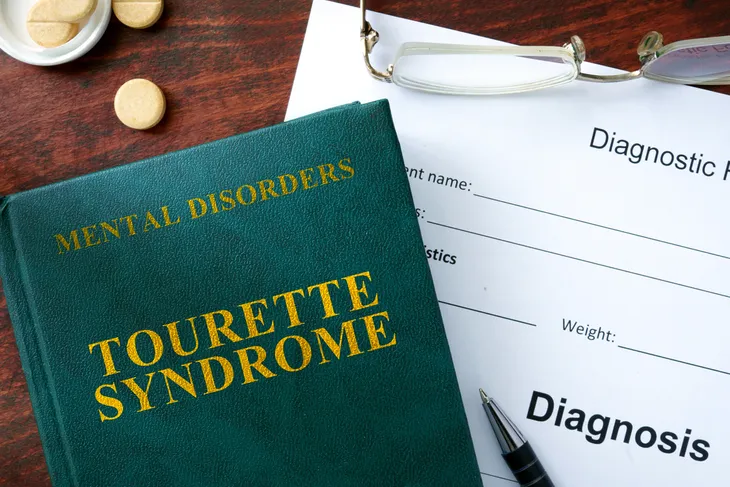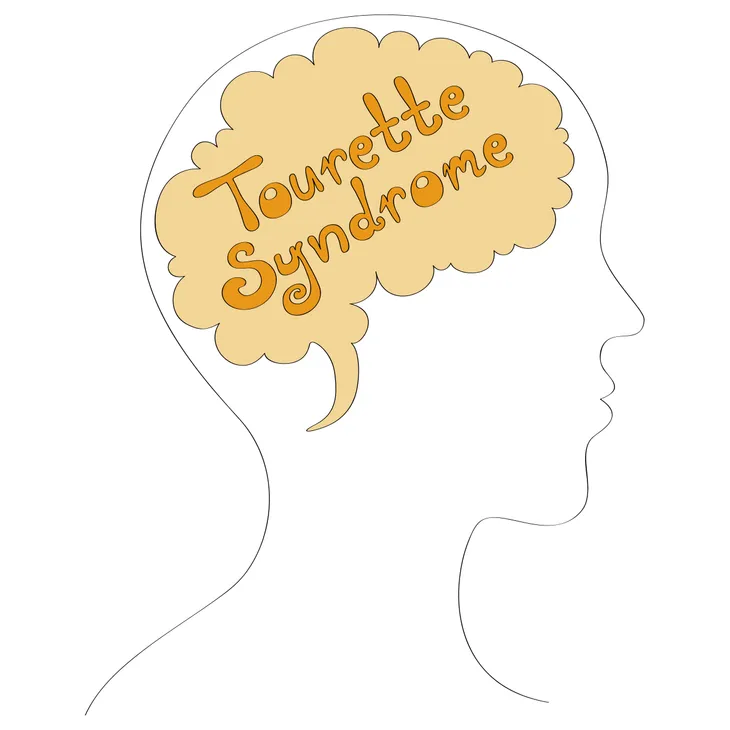Tourette Syndrome (TS) is a fairly common disorder that affects between 6 to 20-percent of children, with boys up to 4-times more likely to develop it, according to Pharmacy Times. It usually begins with signs of involuntary movements (motor tics) followed by vocal tics, it adds.
While the peak of the symptoms is usually around ages 8 to 11, up to 80-percent of patients in early adulthood experience an improvement in symptoms, it adds. However, only 8 to 10-percent of patients see complete remission in adulthood. “For most, TS is a lifetime disorder,” it notes. Let’s look at 13 things to know about the syndrome…
1. Examples of Motor Tics
Motor tics are involuntary movements, which can be “simple” or “complex,” according to the Mayo Clinic. Simple tics may include behaviors such as repetitive eye blinking, head jerking, nose twitching, or mouth movements, it says.
Meanwhile, some TS patients will experience more involved motor tics, which can include touching or smelling objects, stepping in patterns, obscene gestures (this is called copropraxia and is quite uncommon), or bending and twisting, it adds.
2. Examples of Vocal Tics
In order to get a diagnosis of TS (as opposed to a tic disorder), there has to be at least 1-vocal tic involved. Just like motor tics, vocal tics can be simple or complex – examples of simple vocal tics include grunting, coughing, or throat clearing, says the Mayo Clinic.
Meanwhile, complex vocal tics include repeating phrases (from the patient or another person), or involuntarily using inappropriate language, a condition called coprolalia that is also relatively uncommon.
3. Tics Can Change Over Time
A motor tic that involves blinking may stop, only to be replaced by another motor tic. They “come and go over time, varying in type, frequency, location, and severity,” explains the National Institute of Neurological Disorders and Stroke.
The first signs of motor tics usually appear in the head and neck area, but can progress to the trunk and lower extremities, it adds. Motor tics usually appear before vocal tics, and simple tics usually appear before complex tics, it explains. While we noted that many patients experience a drop in TS symptoms with age, about 10 to 15-percent of patients “have a progressive or disabling course that lasts into adulthood,” says the source.
4. Getting a TS Diagnosis
To get a diagnosis of TS, the patient must have exhibited at least 2-motor tics and 1-vocal tic for at least a year (but not necessarily at the same time), explains Tourette Canada. The symptoms must also have appeared before the age of 18. Oftentimes, there are comorbid conditions for a doctor to consider such as ADHD, OCD, anxiety, or a learning disability.
The source explains that some other conditions can mimic TS (such as an infection or Huntington Disease), and to be sure your doctor may order imaging tests to rule out other health problems. However, imaging tests aren’t necessary for a TS diagnosis, it adds.
5. The Cause is Unknown
The exact cause isn’t known, but the latest research points to “abnormalities in certain brain regions,” the connections between these regions, and possible imbalances of neurotransmitters such as dopamine and serotonin, notes the National Institute of Neurological Disorders and Stroke.
The Mayo Clinic says there could be genetic or environmental links that aren’t yet fully understood. That means having a family history of Tourette syndrome (or other tic disorders) may raise your chances of developing it.
6. Premonitory Urges Are Common
For many TS patients, there is an “urge” to tic in order to get some temporary relief. These are called premonitory urges, and it’s usually an uncomfortable feeling or sensation that can be diffused for a short amount of time by following through with the motor or vocal tic.
A post on Tourette Canada says premonitory urges can take many forms, such as an urge to move, or “increased tension, anxiety, pressure, fullness, a feeling that something is not ‘just right’, an ache, itching, tingling, burning, numbness, and cold.” For many patients, this feeling is hard to put into words, it adds.
7. TS is More Than Blurting Out Words
When many people think about TS, they think about people blurting out swear words in public (an example of coprolalia) – but that’s not the main marker of the disorder. “Many people believe that a person must have coprolalia in order to have a diagnosis of Tourette Syndrome. In fact, only a small minority have this symptom,” notes the Tourette Association of America.
Another myth is that it’s only inappropriate language used in these cases. The association says that patients can also blurt out other words or phrases that aren’t offensive, such as “elephant” or “donkeys have knees.” Whatever the case, these vocal tics are often misunderstood by educators and result in students being punished or removed from class, it adds.
8. Episodes of Rage
The same source explains that a “small percentage” of patients with TS have “outbursts of uncontrollable anger,” sometimes more common at home than in a school setting. These episodes may cause the patient to lash out verbally, throw objects, or call people names, “all in a manner that seems unprecipitated,” it adds.
The source explains that these outbursts are “not the fault of the child nor the parents,” which is important if you believe as a parent you’re somehow doing something to cause the behavior. It is not necessarily the result of environmental stress, but a “neurologically based rage” that can be made worse from negative reactions, it adds.
9. Signs of Disinhibition
The Tourette Association of America explains that TS patients may have trouble applying their “mental brakes,” meaning a child won’t be able to control expression of certain behaviors or thoughts.
These behaviors may include “excessive silliness, being sassy, free-associative comments, emotional outbursts, contextual swearing, blurting out, inappropriate comments, explosive anger, and oppositional defiance,” notes the source. While controlling impulses is already a challenge for many children, it’s a greater challenge in TS patients and is not “purposeful disobedience” – but rather the result of the chemical imbalances related to TS, it explains.
10. Obsessive Behaviors
As we noted earlier, obsessive-compulsive disorder (OCD) is sometimes (but not always) associated with TS. “Providing appropriate educational supports is significantly complicated for students with TS and OCD because it is often difficult to tell the difference between complex tics and obsessive-compulsive behaviors,” says the Tourette Association of America.
Behaviors associated with OCD may include perfectionism, trouble completing tasks, difficulty making transitions, and poor social interactions, it adds. These symptoms may be mistaken for defiance, disrespect for authority, or simply being lazy, which all can lead to punishment and a possible drop in grades, it adds.
11. High Intelligence, Low Social Skills
The Tourette Association of America also notes that while many children with TS “score above average and higher on IQ tests,” they may have “social deficits” that make them unaware of how to act in a social setting.
While many people who lack social skills – especially children and teens – can be treated as outsiders by their peers, TS patients can be “taught the social skills necessary to be successful,” adds the source. School resources and counselors are often helpful in this process, and an intervention (in the form of an Individualized Education Plan or 504 Plan) by professionals is necessary to improve social skills, it notes.
12. Drug Treatments
The National Institute of Neurological Disorders and Stroke says medication is often not necessary for TS patients, because they don’t cause impairment. “However, effective medications are available for those whose symptoms interfere with functioning,” it adds.
Drug therapies include neuroleptics (sometimes used to control psychotic disorders), or alpha-adrenergic agonists such as clonidine (primarily used for high blood pressure.) Doctors may consider other medications if there are co-existing conditions such as ADHD – it says recent research shows that stimulant medications such as methylphenidate and dextroamphetamine “can lessen ADHD symptoms in people with TS without causing tics to become more severe.”
13. Other Treatments
Healthline.com explains behavioral therapy and psychotherapy are 2-non-drug approaches to helping patients become aware of tic triggers and learn other behaviors in place of tics (competing response training). It says your doctor may recommend other approaches such as hypnosis or guided meditation as part of the psychotherapy, which can help reduce related anxiety and other symptoms.
There’s also “deep brain stimulation,” which sounds like something from sci-fi but can be effective in some cases (although still being reviewed for treating TS symptoms), it adds. The technique involves implanting a battery-powered device in the brain to stimulate areas that control movement, or implanting electrical wires to stimulate those areas of the brain, it adds. “This method has been useful in some people with tics deemed very difficult to treat,” it adds.
















